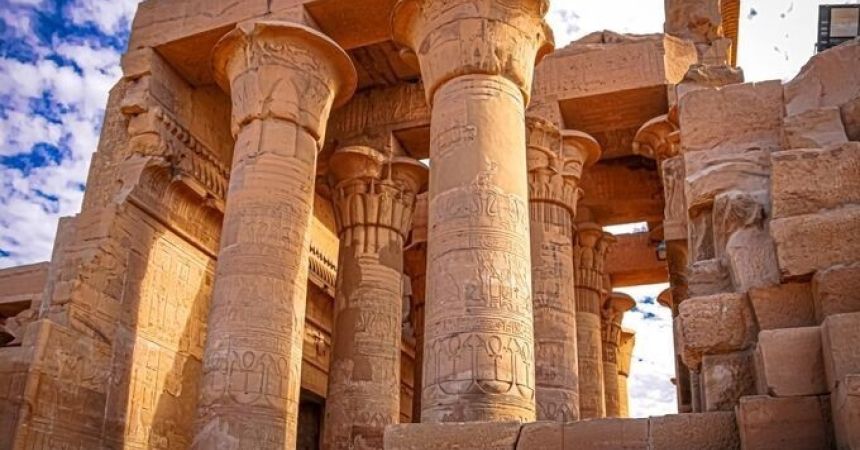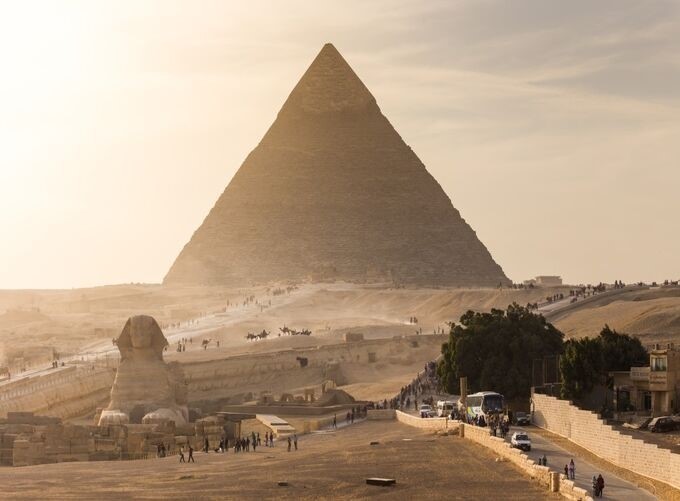
8-Day Egypt Itinerary – Culture, History & Nile Cruise
Egypt is a country like no other—a place where ancient history, rich culture, and breathtaking natural beauty converge. From the colossal Pyramids of Giza and the enigmatic Sphinx to the grandeur of Luxor’s temples and the tranquility of Aswan, Egypt captivates the imagination and ignites the soul.
If you're planning a visit and have 8 days in Egypt, you're in for an extraordinary experience. This itinerary is crafted for first-time visitors and balances historical exploration, cultural immersion, and leisure. You’ll explore Cairo, Luxor, Aswan, and even venture to the monumental temples of Abu Simbel.
Day 1: Arrival in Cairo – Discover the City of a Thousand Minarets
Morning: Land in Cairo
Arrive at Cairo International Airport and transfer to your hotel. For a view of the Pyramids, choose a hotel in Giza. For a lively urban experience, stay in Downtown Cairo or Zamalek.
After check-in, relax and prepare for your adventure.
Afternoon: Egyptian Museum
Start your journey at the Egyptian Museum in Tahrir Square. This treasure trove holds over 120,000 artifacts, including:
- The legendary golden mask of Tutankhamun
- Royal mummies in the Mummy Room
- Statues and relics from the Old, Middle, and New Kingdoms
Spend 2–3 hours here to set the historical context for the days ahead.
Day 2: Giza Pyramids, Sphinx, and Saqqara
Morning: The Pyramids of Giza and the Sphinx
Head to the Giza Plateau, one of the most iconic sites on Earth. Stand before the last remaining Wonder of the Ancient World—the Great Pyramid of Khufu.
Don’t miss:
- Pyramids of Khafre and Menkaure
- The Great Sphinx, guarding the plateau for millennia
- Optional camel ride or horse-drawn carriage
- Enter the Great Pyramid (extra ticket required)
Afternoon: Saqqara and Memphis
Drive to Saqqara, home to the Step Pyramid of Djoser, the earliest monumental stone structure ever built. Then, visit Memphis, the first capital of ancient Egypt, to see:
- The colossal statue of Ramses II
- The Alabaster Sphinx
Evening: Sound and Light Show (Optional)
Back at the pyramids, attend the Sound & Light Show, where laser lights and narration illuminate 5,000 years of history.
Day 3: Islamic Cairo, Citadel, and Khan el-Khalili
Morning: Islamic Cairo and Saladin Citadel
Explore the rich Islamic heritage of Cairo:
- Saladin Citadel – A fortress from the 12th century
- Mosque of Muhammad Ali (Alabaster Mosque) – Inspired by Istanbul’s Blue Mosque
- Sultan Hassan Mosque – A masterpiece of Mamluk architecture
- Al-Rifa’i Mosque – Burial place of modern Egyptian royalty
Afternoon: Khan el-Khalili Bazaar
Wander through the vibrant Khan el-Khalili market, one of the oldest bazaars in the Middle East. Pick up:
- Handcrafted jewelry
- Spices and perfumes
- Traditional lanterns
- Papyrus and souvenirs
Enjoy tea at El Fishawy Café, a 200-year-old institution.
Day 4: Fly to Luxor – Temples of the East Bank
Morning: Travel to Luxor
Take a short domestic flight to Luxor, the ancient city of Thebes. Check into a hotel or Nile cruise ship, depending on your preference.
Afternoon: Karnak and Luxor Temples
Explore the East Bank of Luxor:
Karnak Temple
- A vast religious complex dedicated to Amun-Ra
- Famous for the Hypostyle Hall with 134 towering columns
- Includes obelisks, sacred lakes, and shrines
Luxor Temple
- Smaller but beautifully preserved
- Best visited at sunset or after dark, when it’s dramatically lit
Walk the Avenue of Sphinxes, recently restored, which once connected the two temples.
Day 5: Valley of the Kings and Hatshepsut’s Temple
Morning: West Bank Exploration
Cross the Nile to visit the Valley of the Kings, where New Kingdom pharaohs were buried in elaborately decorated tombs.
Highlights:
- Visit 3 included tombs (rotated for preservation)
- Optional: King Tutankhamun’s tomb (requires extra ticket)
- Marvel at the artistry in tombs of Ramses III, Seti I, or Merenptah
Temple of Hatshepsut
- Built by Egypt’s most powerful female ruler
- Features stunning colonnades and cliff-face integration
Colossi of Memnon
- Two massive seated statues of Amenhotep III, once guarding his mortuary temple
Afternoon: Relaxation or Luxor Museum
Return to your accommodation for lunch and rest. If time allows, visit the Luxor Museum, which offers an intimate and beautifully curated collection of local artifacts.
Day 6: Travel to Aswan – Tranquil Beauty on the Nile
Morning: Travel to Aswan
Take a morning train (3 hours), car, or continue by Nile cruise to Aswan. Check into a hotel or cruise ship.
Aswan offers a slower pace and is surrounded by granite rocks, palm-lined islands, and Nubian culture.
Afternoon: Philae Temple and High Dam
Visit:
Philae Temple
- Resides on Agilkia Island
- Dedicated to Isis, goddess of magic and motherhood
- Relocated from its original site to avoid flooding from the Aswan High Dam

Aswan High Dam
- One of the world’s largest dams, completed in the 1970s
- A marvel of modern engineering that saved many ancient sites
Day 7: Day Trip to Abu Simbel – A Monumental Masterpiece
Early Morning: Drive to Abu Simbel
Leave before dawn for a 3-hour drive to Abu Simbel, near the Sudanese border.
These twin temples were built by Ramses II:
- The Great Temple features four colossal statues of the pharaoh
- The Small Temple honors his wife, Queen Nefertari
- Both were relocated by UNESCO to save them from Lake Nasser’s rising waters
Afternoon: Return to Aswan
After visiting Abu Simbel, return to Aswan by late afternoon. Spend your last few hours shopping or resting.
Evening: Train or Flight to Cairo
Board a night train or fly back to Cairo, depending on your schedule. Overnight in Cairo or continue to the airport for your departure the next day.
Day 8: Departure from Cairo
Depending on your flight schedule, you might have time for:
- A visit to Coptic Cairo (Hanging Church, Ben Ezra Synagogue, Church of St. Sergius)
- A quick breakfast and stroll through Plaka-like alleys in Old Cairo
- Last-minute shopping in Downtown Cairo
Then, transfer to Cairo International Airport and bid farewell to the land of Pharaohs.
Optional Extensions (If You Have More Time)
If you can extend your stay or want to customize your itinerary:
- Hurghada or Sharm El-Sheikh: For beach lovers and divers
- Alexandria: Explore Greco-Roman history on the Mediterranean coast
- Siwa Oasis: An off-the-beaten-path adventure in the Western Desert
Essential Egypt Travel Tips
When to Go:
- Best months: October to April
- Summer (June–August) is very hot, especially in Upper Egypt
Visas:
- eVisa available online for many nationalities
- Also available on arrival at major airports
Currency:
- Egyptian Pound (EGP)
- Credit cards accepted in cities; cash is essential in markets and villages
Language:
- Arabic is the official language
- English is widely spoken in tourist areas
Dress Code:
- Modest clothing is advised, especially when visiting religious sites
- Lightweight, breathable clothing is a must
Tipping:
- Common and expected for most services
- Keep small notes handy for tips
Is 8 Days in Egypt Enough?
Yes—especially with a well-planned itinerary. In 8 days, you can:
- Stand before the Great Pyramids
- Wander through the Egyptian Museum
- Explore the majestic temples of Luxor and Karnak
- Marvel at the tombs in the Valley of the Kings
- Sail on the Nile
- Discover the quiet magic of Aswan
- Be awestruck by the Abu Simbel Temples
You’ll leave Egypt with a heart full of memories and a newfound appreciation for the civilization that helped shape the world.



